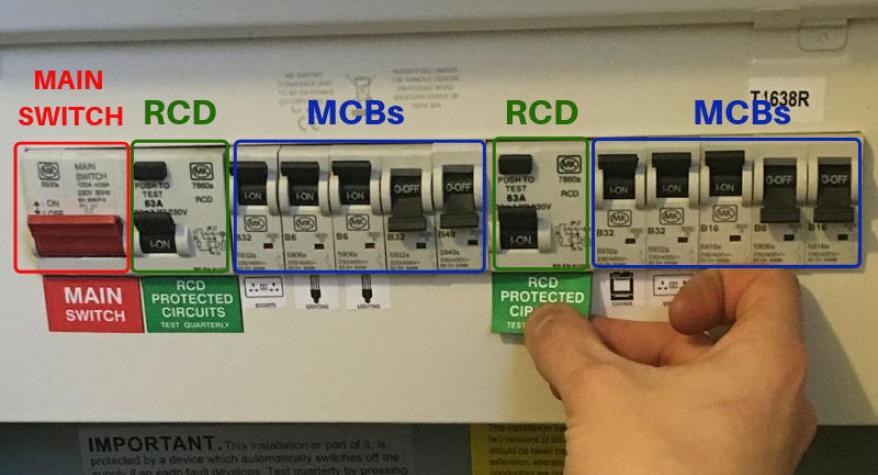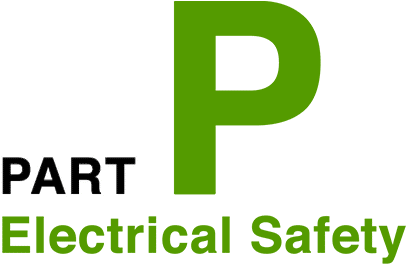A Complete Guide for Homeowners and Landlords by Duravault – Your Trusted Local Electrician in Leeds.
What Is a Fuseboard and How Does It Work?
The electrical fuseboard—also known as a consumer unit or fusebox—is one of the most important components in your home’s electrical system. Despite being tucked away in cupboards or garages, this unit plays a vital role in protecting your property, family, and tenants from electrical faults.
If you’re a homeowner looking to understand your fuseboard better or a landlord in Leeds needing a fuseboard upgrade, this guide will walk you through the essentials. At Duravault, we specialise in safe, modern installations and help customers across Leeds with upgrades, repairs, and inspections that comply with UK regulations.
What Is a Fuseboard?
A fuseboard is the central hub of your home’s electrical system. It distributes power throughout the property and protects against electrical hazards by monitoring the flow of electricity and disconnecting circuits if something goes wrong.
Think of it as the "control centre" of your electrical system. Every plug socket, light fitting, and appliance ultimately connects back to the fuseboard. Key Responsibilities of a Fuseboard:
- Distribute electricity to different circuits in the home
- Protect circuits from overloading
- Shut off power if a fault is detected
- Ensure safe disconnection during faults to prevent fire or shock
Historically, fuseboards used ceramic fuses, but modern homes now rely on updated consumer units that incorporate circuit breakers and Residual Current Devices (RCDs) for enhanced safety.
If your fuseboard is outdated, has rewirable fuses, or lacks RCD protection, it could be a hazard—especially if you’re adding new appliances or making renovations. That’s where Duravault steps in, offering professional fuseboard replacement and upgrade services in Leeds and surrounding areas.
The Different Types of Fuseboards
Not all fuseboards are created equal. Depending on when your property was built or last rewired, you could have one of several types of consumer units. Each serves the same purpose—controlling and protecting your circuits—but they vary in safety, features, and compliance with modern regulations.
1 - Traditional Rewirable Fusebox
Found in many older homes across Leeds, these units use fuse wire that melts when too much current flows through. They're no longer compliant with modern electrical standards and are considered outdated and unsafe. Common problems:
- No RCD protection
- High fire risk
- Inconvenient to reset
- Often overloaded due to modern electricity demand
2 - Modern Split-Load Consumer Unit
These units have multiple MCBs (Miniature Circuit Breakers) and at least one RCD. They’re a common standard for residential properties and strike a balance between cost and safety. Pros:
- Easy to reset trips
- Some RCD protection
- Suitable for most domestic settings
3 - Dual RCD Consumer Unit
This is a more advanced system where circuits are split between two RCDs for added protection. If one RCD trips, the other half of the home still has power. These units are widely used in UK homes post-2010.
4 - High Integrity Consumer Unit
This setup separates critical circuits (like fridges or alarms) so they remain live even if an RCD trips on other parts. It uses a mix of RCDs and RCBOs for tailored protection. Ideal for:
- Larger properties
- HMOs (Houses in Multiple Occupation)
- Homes with EV chargers, electric heating, or outbuildings
5 - RCBO Consumer Unit
Every circuit has its own Residual Current Breaker with Overcurrent (RCBO). This offers the highest level of safety and avoids any circuit dependency. It's the gold standard in safety and required for many new builds.
How Does a Fuseboard Work?
Understanding how a fuseboard operates gives insight into how it protects your home from electrical faults. When electricity enters your property from the grid, it flows through the fuseboard, which divides it into individual circuits—lighting, sockets, cooker, boiler, etc.
Each of these circuits is protected by a circuit breaker (MCB or RCBO). If a fault occurs—like a short circuit, overload, or earth fault—the breaker detects it and automatically shuts off the affected circuit. The process looks like this:
- Electricity enters the fuseboard from the mains.
- The main switch allows you to isolate the entire system.
- Power flows to the RCDs or RCBOs, monitoring for imbalance or faults.
- Individual MCBs monitor each circuit for overloads or short circuits.
- If a fault is detected, the fuseboard immediately disconnects that circuit.
This fast response prevents electric shock, electrical fires, and appliance damage. It’s one of the simplest but most effective safety mechanisms in your entire home.
At Duravault, we not only install these systems but also ensure you understand exactly how to use them safely and when to call a qualified electrician if anything seems off.
The Different Parts of a Fuseboard
Modern consumer units are made up of several important components, each designed to monitor, protect, and control your home’s electrical system. Here’s a breakdown of the key parts:
Main Switch
This red switch allows you to turn off power to the entire fuseboard. It’s your master control and is used during emergencies or maintenance.
RCDs (Residual Current Devices)
RCDs protect against electric shock. They detect leakage currents and shut off power if they sense a difference between live and neutral wires—such as when electricity is flowing through a human body or into the earth.
RCBOs (Residual Current Breaker with Overload)
These combine the functions of an RCD and MCB in one device. Each circuit can be individually protected, which reduces disruption if only one trips.
MCBs (Miniature Circuit Breakers)
These protect individual circuits from overload or short circuits, such as when too many appliances are running at once or a wire becomes damaged.
Earth and Neutral Bars
These terminal bars help distribute electrical return paths safely and maintain proper earthing throughout the property.
Surge Protection Device (SPD)
Now required under certain conditions in the 18th Edition of the Wiring Regulations, SPDs protect your devices from voltage spikes caused by lightning or power grid disturbances.
If your board lacks any of these features—especially RCDs or SPDs—it’s time to consider a fuseboard upgrade. Electrical technology has come a long way, and upgrading your fusebox is one of the most impactful ways to protect your property.
Fuseboard Upgrades in Leeds
At Duravault, we specialise in fuseboard installations, consumer unit replacements, and full system upgrades throughout Leeds and West Yorkshire.
Whether you’re a homeowner looking to modernise your property or a landlord meeting compliance under the Electrical Safety Standards in the Private Rented Sector (England) Regulations 2020, we offer tailored solutions to suit your needs.
Why You Might Need a Fuseboard Upgrade:
- Your current board has rewirable fuses or lacks RCD protection
- You’re planning a home extension or loft conversion
- You’re installing high-power devices like EV chargers, heat pumps or electric ovens
- Your fuseboard trips frequently or shows signs of burning or corrosion
- You need to meet landlord compliance laws
What to Expect from a Fuseboard Upgrade:
- A thorough assessment of your existing setup
- Full replacement of the old board with a modern 18th Edition-compliant unit
- Testing and certification of all circuits
- Labelling and clear explanation of your new board
- All work completed to NICEIC standards
We work cleanly, efficiently, and with full certification and insurance—so you have complete peace of mind.
Duravault – Your Local Fuseboard Installer in Leeds
From Garforth to Guiseley, Chapel Allerton to Cross Gates, Duravault is the trusted name for electrical upgrades, installations, and safety reports in Leeds. Why Choose Us?
- Local and Accredited: We’re based right here in Leeds and fully NICEIC-approved.
- Transparent Pricing: We offer fixed quotes with no hidden costs.
- Experienced Team: Our electricians have years of fuseboard upgrade experience.
- Customer-Focused: We clean up after ourselves, explain everything clearly, and keep disruption to a minimum.
- Fully Compliant: All our fuseboards meet 18th Edition wiring regulations and include certification.
Book Your Fuseboard Upgrade Today
If your fuseboard is more than 20 years old, if it lacks modern safety features, or if you simply want the peace of mind of a professional electrical system—Duravault is here to help. We cover all areas of Leeds including:
North Leeds – Alwoodley, Moortown, Meanwood
West Leeds – Pudsey, Farnley, Morley
East Leeds – Cross Gates, Colton, Temple Newsam
South Leeds – Middleton, Rothwell, Woodlesford
📞 Call us now on 0113 436 9988
🌐 Or book your upgrade at www.duravault.co.uk
Your fuseboard is the heart of your home’s electrical safety. Make sure it’s up to date—with Duravault, your local fuseboard installer in Leeds.



